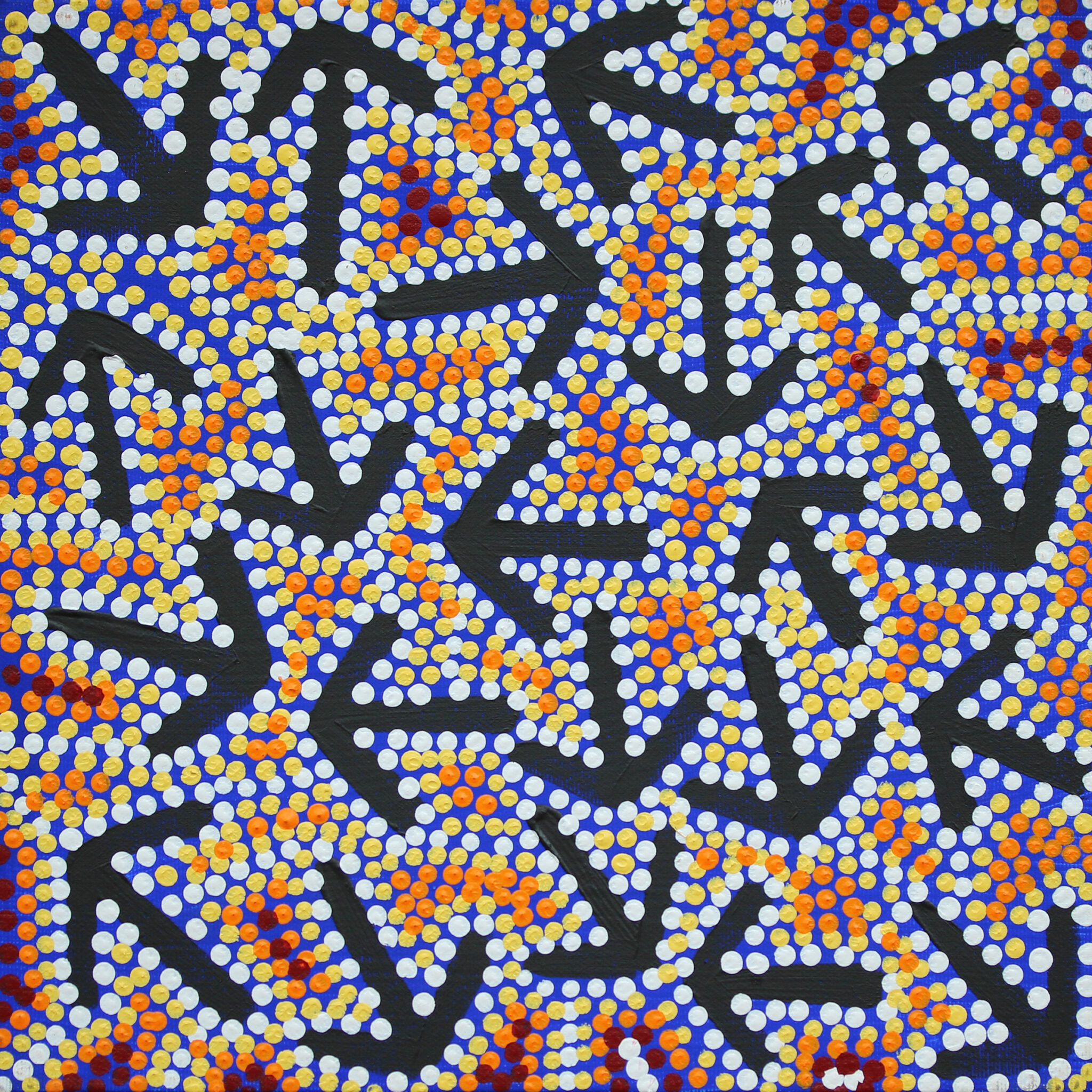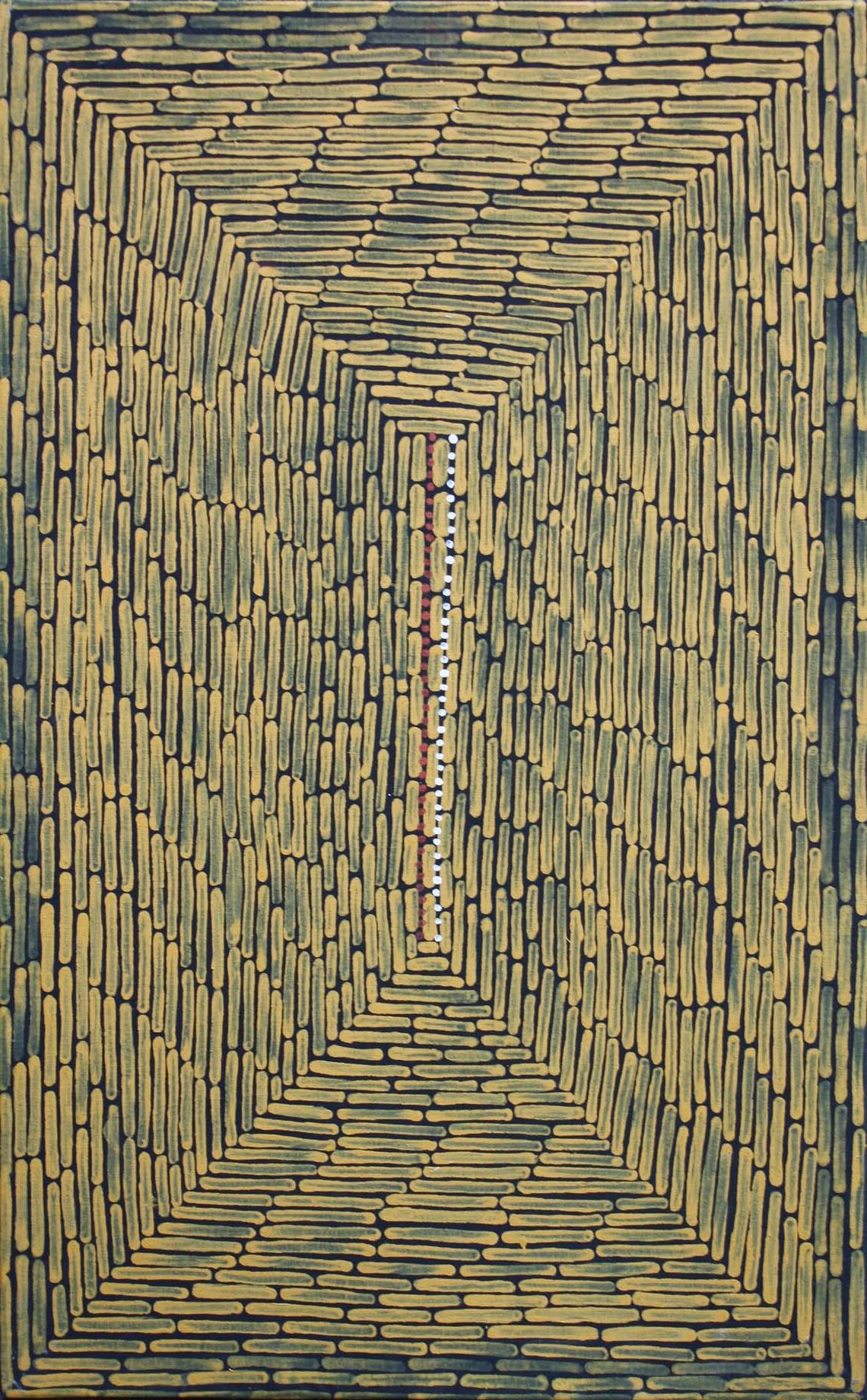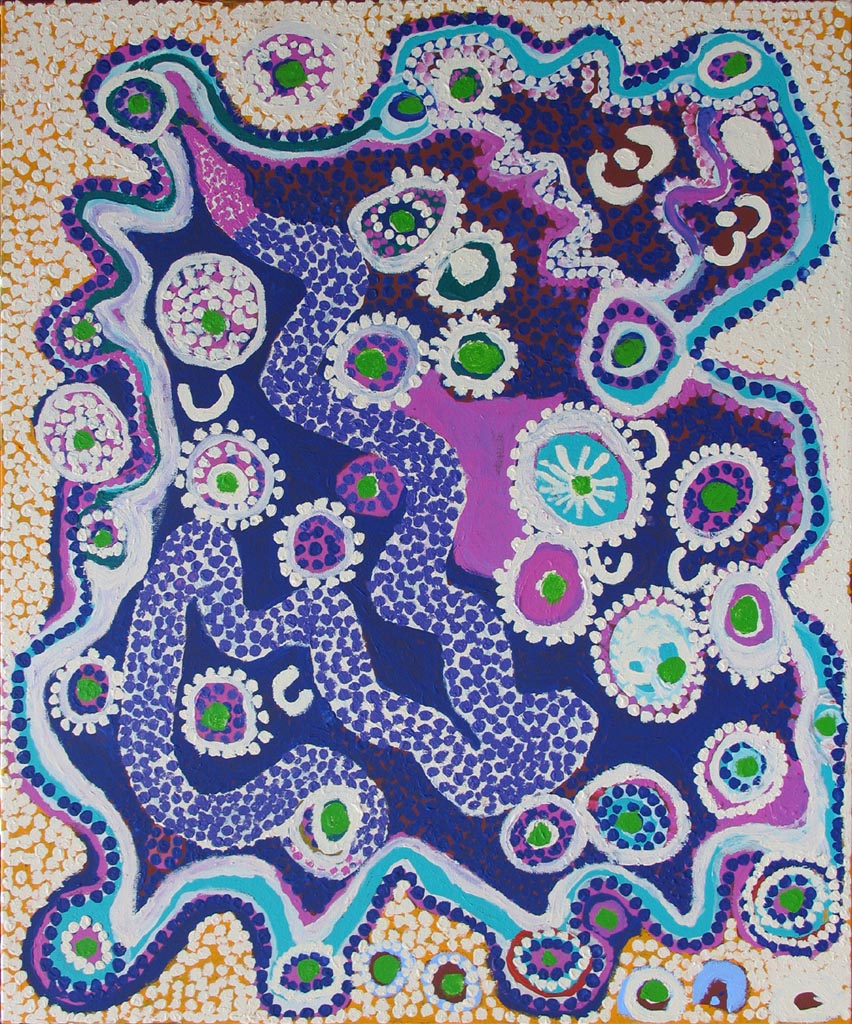Serial:
Size:
$4,845 (tax inc.)
SOLD
The story:
Wanampi Creation Story Tiger is telling a husband and wife story of wati kutjara (two men) and minyma kutjara (two women). The men are brothers and the women are sisters. The story relates to the formation of the land and rock holes around Piltati. Away back in times when the world was young, two Snake brothers and their wives lived near Piltati, west of Amata. Every day the women went out hunting. And every evening the bought home kuka (meat for cooking) for the men, who didn’t do anything but perform ceremonies. After a while they became annoyed at the men’s laziness. The women decided to eat all the food they caught and to leave the men to fend for themselves. The Snake brothers were angry, they decided to punish the women for their insubordination. After lots of talking, each of the brothers agreed to change themselves into a Wanampi (a giant mythical water serpent, which also had the power to travel above and below ground) and play a practical joke upon the women that would cause them a great deal of hard useless labour. They went to a marsupial rat hole where the women had been digging, and imitated the tracks of a large snake by rubbing the back of a spear thrower in the ground. Then they entered the hole, and one of them left out enough of his tail for the women to see. The younger sister became very excited when she saw the tracks of so large a snake and then its tail, and began to pull the creature from its burrow, but the tail kept slipping from her grasp. Always the Wanampi, to tease the younger sister, allowed himself to be dragged out a few feet before wriggling himself free. Again and again he let himself be caught before wriggling out once more. Eventually the younger sister became so tired, she gave up and returned to her sister. In evening, when they were eating dinner, the younger sister told her elder sister: “Today I almost caught a carpet snake as big as a Wanampi, but I couldn’t pull it from its burrow, it was too strong for me!”. “I’ll give you a hand tomorrow”, said the elder sister, “and we’ll catch it, no matter how big it is!”. The next morning the women set off with their wana (digging sticks) and piti (large wooden bowl). They dug all day long, then the next day and the next, occasionally glimpsing the snake. Sometimes they caught a small carpet snake enough for their evening meal. The small carpet snakes were created by the men so the women wouldn’t lose heart nor grow hungry. They continued to dig on, after the Wanampi, but they never caught him. In their pursuit the women dug a trench from Atjaratjara to Pitaldi, now a watercourse, approximately 25km long. Their burrow started to go deeper, and the women dug many subsidiary branches in their pursuit, creating the gorge at Piltati, with its creeks and piles of rock that clutter the valley floor. Finally the elder sister changed her tactics. She dug a pit ahead of the entrance to the burrow (now the largest rock hole at Piltati), uncovering the Wanampi before he could get away. She was so frightened by his huge coils turning around at her feet that she threw her digging stick piercing the side of the Wanampi. The other Wanampi left the burrow, chased and swallowed the younger woman. The injured snake, although in great pain, caught, killed and ate the elder sister at the mouth of Piltati gorge. That Wanampi is now a bloodwood tree with a dry limb sticking out at one side, and the trunk is covered with lumps and excrescences. The dead limb is the digging stick with which the snake is speared: the lumps and excrescences are the body of the woman still showing through the skin of the snake. Tiger says this story is from his country – Piltati. The white snake is the big brother, while the purple snake is the younger brother. The red circles with dots around their edges represent kampurarpa or bush raisin. The other circles are kapi tjukula or rock holes where water collects.
Related artwork:
-
29 Hunter St, Hobart 7000,
Tasmania, Australia - +61 3 6236 9200
- euan@artmob.com.au
Cash – locally only – up to $10,000 only. Layby facilities available. Card details can be advised securely using WhatsApp.
© Art Mob Pty Ltd, Aboriginal Fine Art Dealer, all rights reserved.



